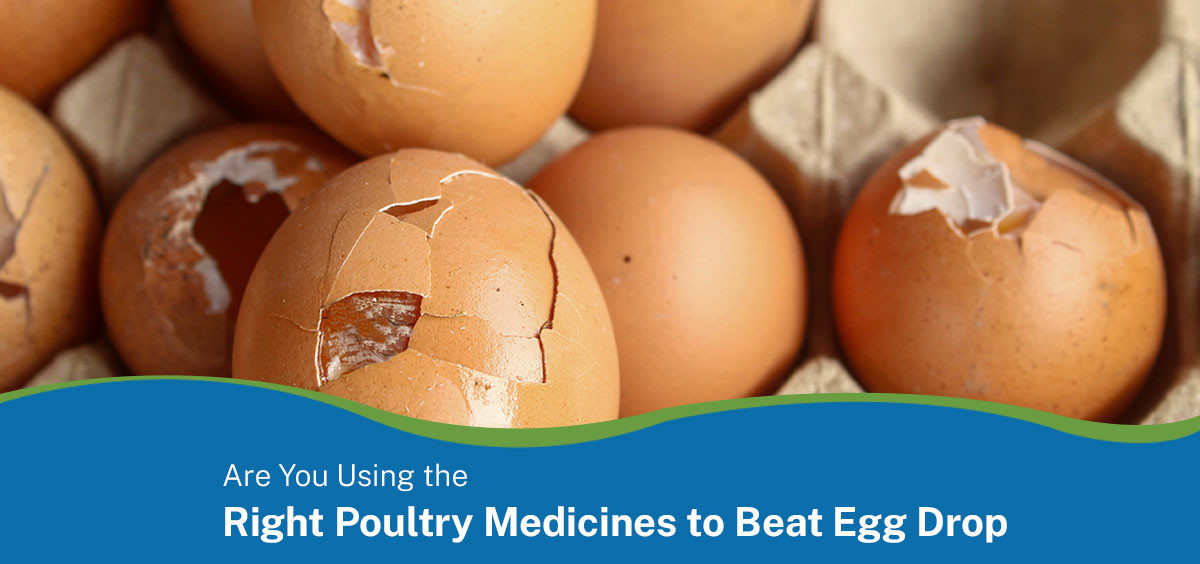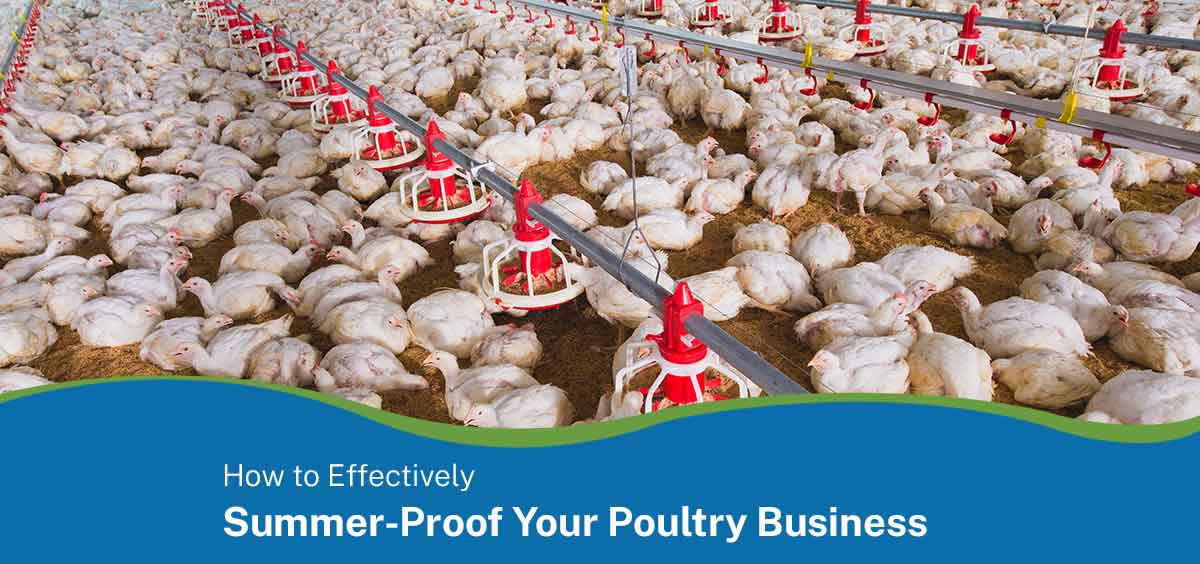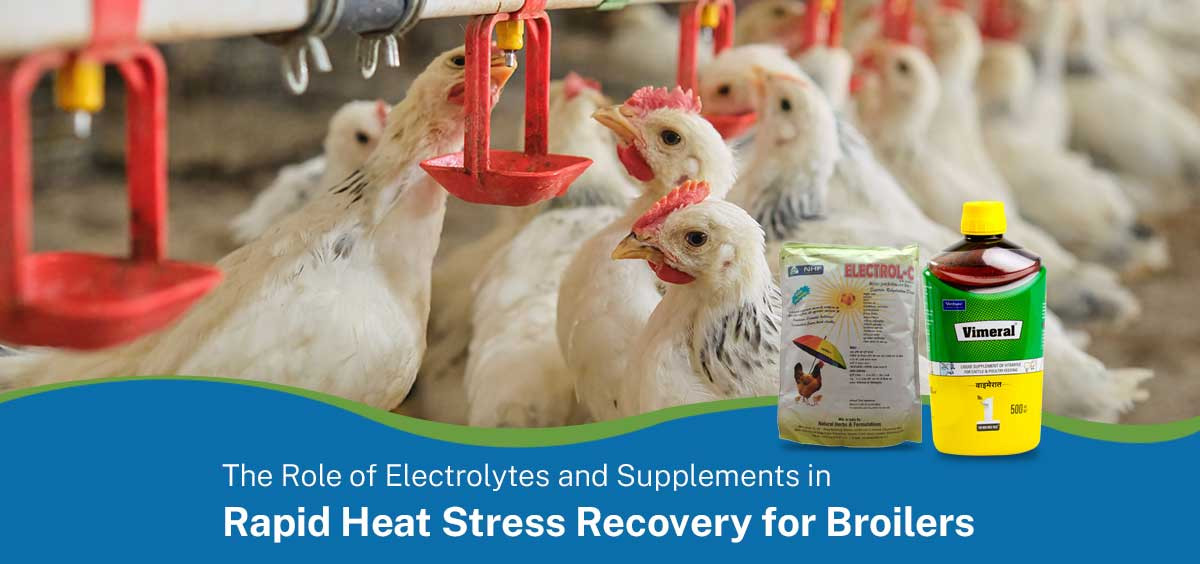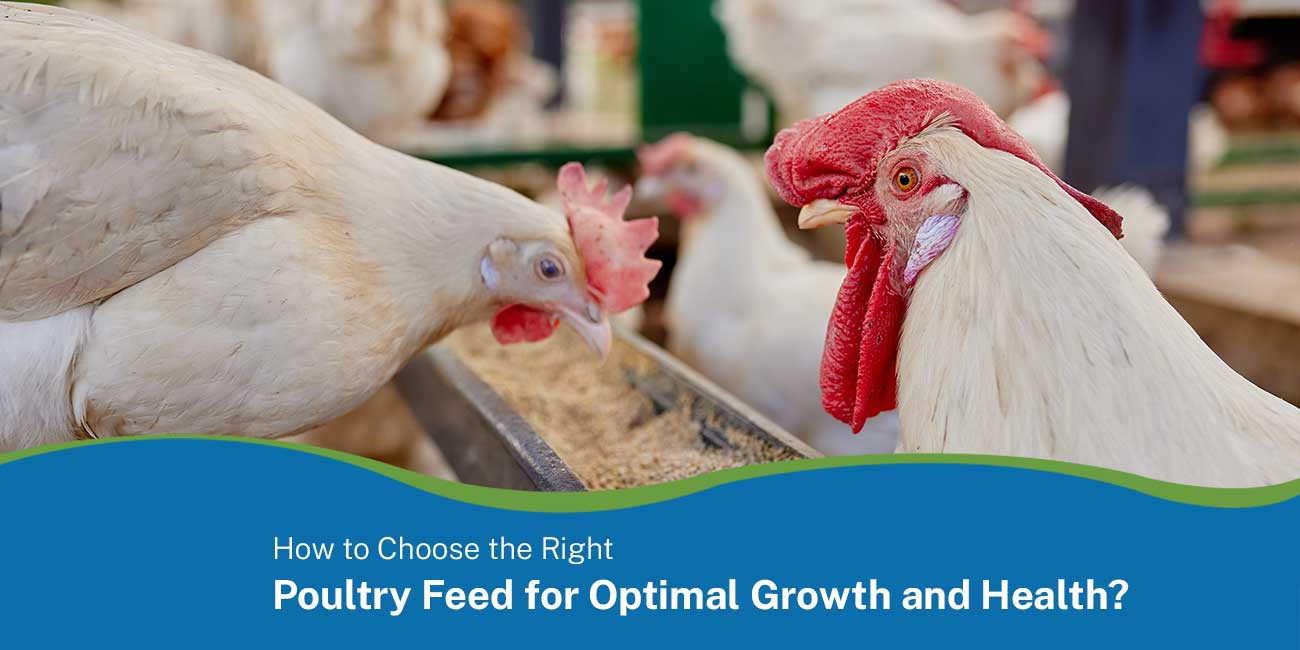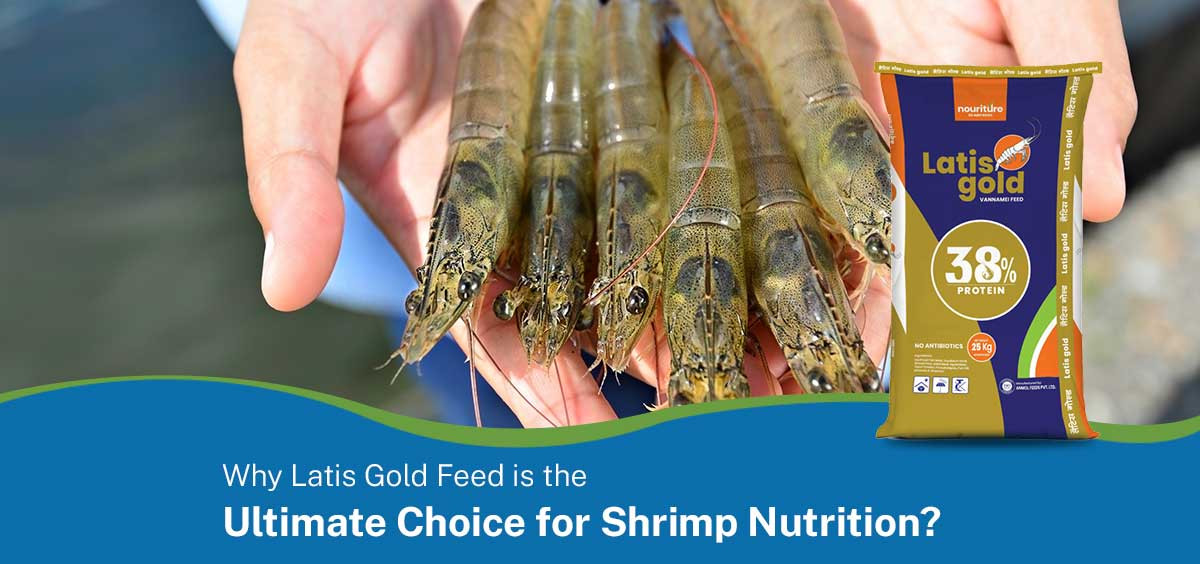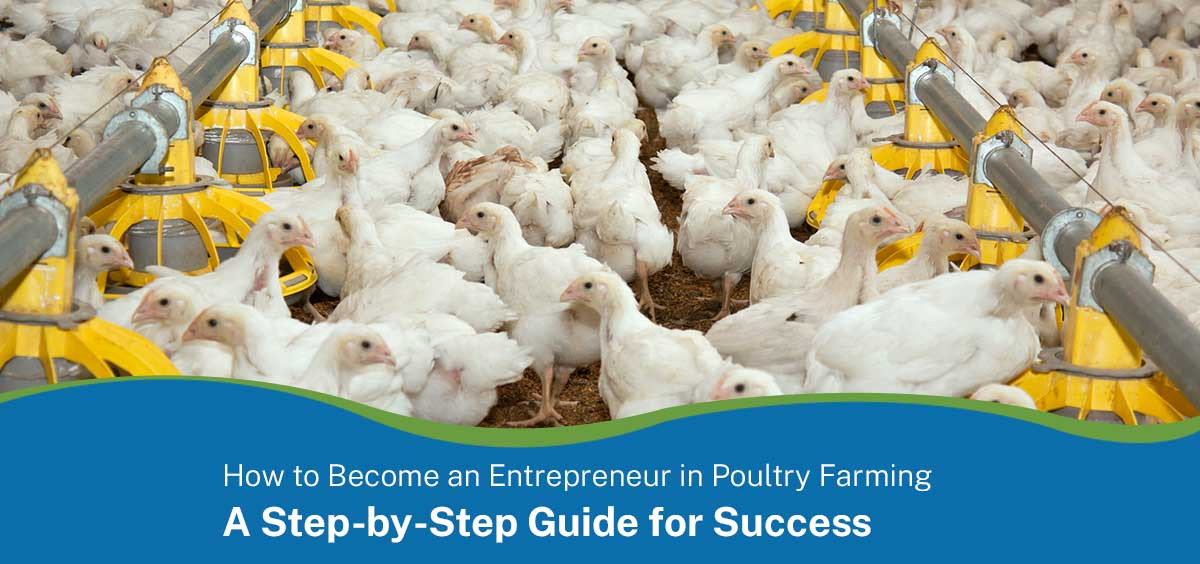How to Insulate Your Broiler House for Maximum Summer Comfort
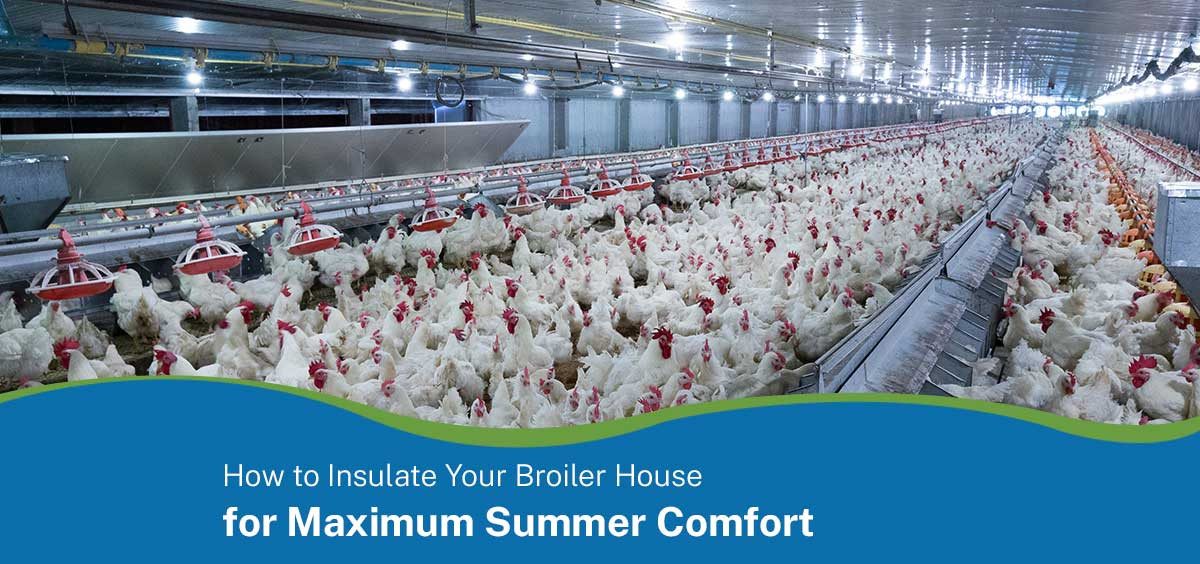
While doing poultry farming, high temperatures pose a major loss in broiler performance, health, and general productivity. Due to the worsening climate conditions, heat stress prevention for broilers is now not a want but a must. When birds are unable to effectively disperse their body heat, heat stress results, which can impair their ability to consume food, grow, and even die. Fortunately, by modifying broiler housing systems, farmers can proactively reduce heat stress and improve flock welfare.
1. Understanding Heat Stress in Broilers
Before making any changes, it’s important to understand how broilers respond to high temperatures. Chickens use panting and wing spreading to control their body temperature because they lack sweat glands. When the temperature inside the poultry house exceeds 30°C (86°F), broilers begin to show signs of heat stress, such as heavy panting, drooping wings, and reduced feed consumption. If temperatures continue to rise, it can lead to heat exhaustion, organ failure, and death.
This renders heat management in poultry an important priority area, particularly in hot or tropical climates.
2. Orientation of Housing and Insulation
The building itself is the initial defence against heat stress. In order to restrict sun exposure on the sidewalls, broiler houses ideally must be built on an east-west axis. Orienting properly decreases heat accumulation within the shed at midday.
In addition, the use of reflective or insulating materials for the roof can reduce internal temperatures considerably. The house won't heat up if it has double roofing or has an insulating layer like thatch or polyurethane foam. Curtains made of UV-resistant material in open-sided sheds also protect the birds from direct sunlight.
3. Ventilation: Natural and Mechanical
Ventilation assumes a central role in heat stress prevention in broilers. Moisture, excess heat, and gases such as ammonia are removed through effective ventilation.
Natural Ventilation: Provide large, adjustable side doors for cross-ventilation. Roll-up curtains facilitate the regulation of airflow due to temperature and weather.
Mechanical Ventilation: Exhaust fans and tunnel ventilation systems are very important in places where it gets very hot. Tunnel ventilation pushes air to circulate in a single direction, which cools birds by enhancing air speed. The right positioning of fans as well as upkeep is important to make them efficient.
Ceiling or circulation fans can also be installed to facilitate air movement in stationary houses.
4. Evaporative Cooling Systems
Evaporative coolers are one of the most efficient Heat Management modifications for poultry housing. Evaporative coolers decrease ambient temperature by blowing air through water-soaked pads (cooling pads) or spraying water droplets into the air.
Cooling Pads: Placed at the end of the house, these pull air through damp material, cooling the air before it arrives at the birds.
Foggers or Misters: Excess heat, moisture, and gases like ammonia are removed by adequate ventilation. But one should be careful not to over-wet the litter, which leads to respiratory disease and footpad dermatitis.
5. Flooring and Litter Management
Floor and litter state may affect the indoor environment substantially. Wet litter contributes to heat generation and high humidity, aggravating heat stress. Utilise absorbent bedding such as wood shavings or rice husk and ensure proper depth. Stirring or litter replacement daily will assist in ensuring dryness. Furthermore, concrete floors hold heat; consider raised floors with proper ventilation below them to improve cooling.
6. Drinking Systems and Water Management
Hydration is crucial in hot weather. Broilers consume a maximum of twice the amount of water when exposed to heat stress, and warm water can deter consumption. Utilise nipple drinkers with sufficient pressure and distance for ready access. Making cool, clean water available through the day aids in maintaining body temperature. In very hot climates, employing buried pipelines or tank shading avoids water overheating.
Adding electrolytes or vitamins (such as Vitamin C) to water also assists birds in managing heat stress better.
7. Stocking Density and Feeding Practises
Reducing stocking density during hot weather enhances air circulation and gives birds more space to dissipate heat. Overcrowding exacerbates the impact of high temperatures.
Feeding in cooler hours of the day, morning or evening can also limit heat generation within the bird's body. Refrain from feeding when it is hottest, as digestion creates heat within the bird's body.
Reconfiguring housing for heat stress prevention for broilers poultry is a daunting project, but the benefits are worth the challenge. A mix of structural modifications, ventilation upgrades, and management refinements can pay big dividends when it comes to bird comfort, growth, and productivity. For areas with increased temperatures, effective heat management in poultry production is no longer a choice, it's a necessity for sustainable poultry farming.
Conclusion
In today’s increasingly hot climate, heat stress prevention for broilers has become a vital component of successful poultry farming. Without effective heat stress prevention for broilers, farmers face major setbacks in growth performance, bird welfare, and overall productivity. From building orientation and insulation to ventilation, cooling systems, and proper litter management every detail matters in the broader strategy of heat stress prevention for broilers. It’s also critical to focus on water availability, feeding practices, and stocking density, especially during peak summer months.
Recent Posts
How can farmers identify signs of nutritional deficiencies in poultry flocks?
Is Poor Cattle Nutrition Costing You More Than You Think on Your Farm?
Are You Using the Right Poultry Medicines to Beat Egg Drop Syndrome?
The Role of Electrolytes and Supplements in Rapid Heat Stress Recovery for Broilers
How to Choose the Right Poultry Feed for Optimal Growth and Health?
How to Become an Entrepreneur in Poultry Farming: A Step-by-Step Guide for Success
PrraniGanga.com | India’s 1st Livestock Products Marketplace
PrraniGanga.com | India’s 1st Livestock Products Marketplace
Welcome to PrraniGanga.com, India's 1st Livestock products marketplace dedicated exclusively to livestock farmers, sellers, vendors, and manufacturers. Our groundbreaking platform introduces a revolutionary approach, providing a vast array of top-tier agricultural inputs meticulously crafted for the livestock industry. From innovative feed supplements to state-of-the-art healthcare solutions, PrraniGanga.com stands at the forefront, redefining procurement experiences and driving unparalleled growth within the global livestock farming community.
In an era where technology is driving the agricultural and farming sectors towards rapid transformation, PrraniGanga emerges as a pioneering force. PrraniGanga.com, India’s first-ever exclusive online marketplace for livestock products, stands as a groundbreaking platform that promises to revolutionize the procurement of livestock essentials. The platform is dedicated to livestock farmers, sellers, vendors, and manufacturers, creating a comprehensive hub for the livestock industry.
A One-Stop Solution for Livestock Farmers
Traditionally, livestock farmers across India have faced challenges in procuring high-quality agricultural inputs, often needing to navigate a fragmented supply chain. This not only causes delays but also limits access to modern, efficient, and cost-effective solutions. Recognizing these pain points, PrraniGanga brings an all-in-one solution tailored specifically for the livestock community, addressing a crucial gap in the agricultural sector.
PrraniGanga is not just another e-commerce platform; it is India’s first and only dedicated marketplace for livestock products. By catering exclusively to livestock farmers and businesses, PrraniGanga ensures a seamless experience, where customers can explore a vast array of premium agricultural inputs that are carefully selected to meet the unique needs of the livestock industry.
A Vast Array of High-Quality Livestock Inputs
One of the most impressive aspects of PrraniGanga is the diverse range of products offered. The platform serves as a comprehensive marketplace for everything a livestock farmer might need. From innovative feed supplements to cutting-edge healthcare solutions, PrraniGanga covers all critical aspects of livestock farming.


